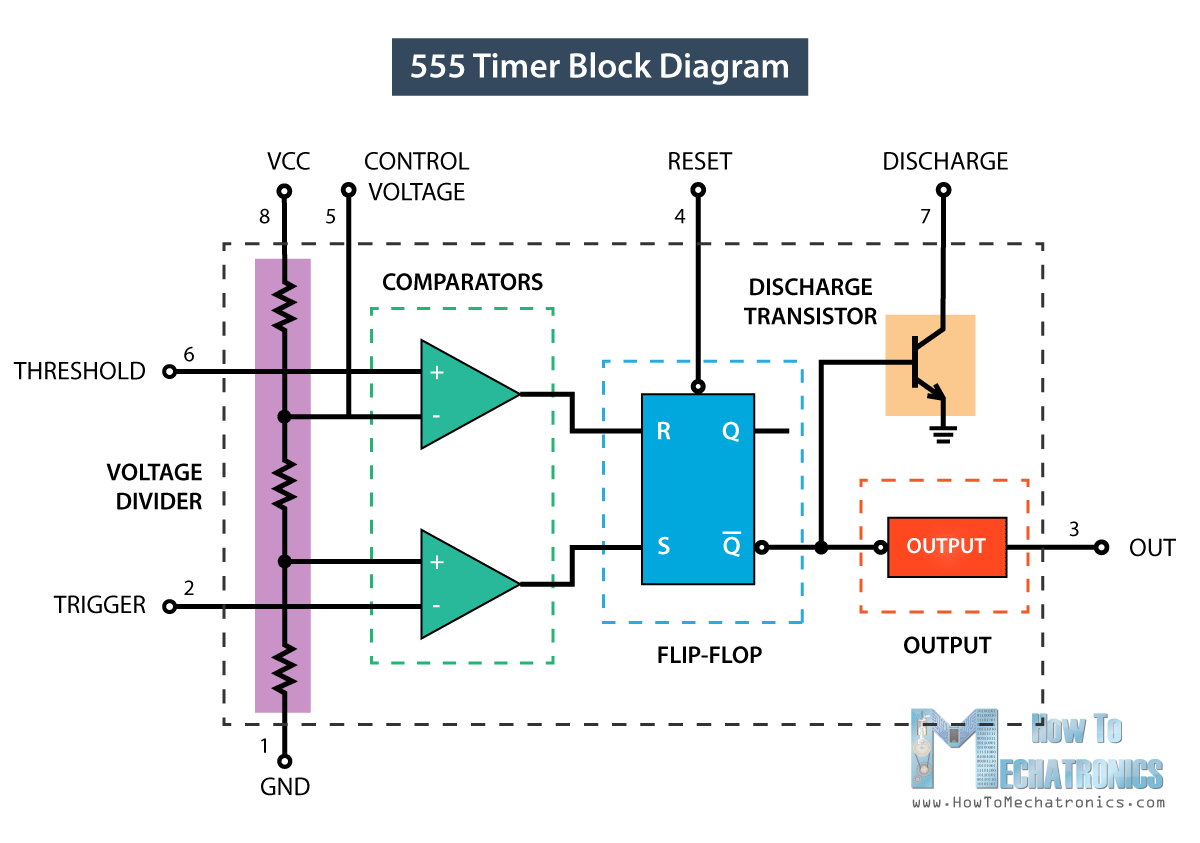
Integrated circuits or ICs contain entire electronic circuits with components etched onto a single semiconductor chip. These compact “chips” powered the digital revolution by enabling advanced computing and technology. To understand how ICs work, a useful case study is the ubiquitous 555 timer IC. This 8-pin device generates timed pulses and delay circuits for a wide range of applications. Look inside the 555 timer for insights into how integrated circuits transform discrete electronic parts into a miniaturized system on a chip.
Design of the IC: Based on Discrete Components
The 555 timer IC replicates the function of discrete components like transistors, resistors, and capacitors. chip consolidates over 20 discrete parts with matched performance specifications into a simple, affordable 8-pin package using metal-oxide-semiconductor (MOS) technology.
According to American electrical engineer hans Camenzind, who invented the 555 timer IC, “integrated circuits drastically reduce size, weight, and cost, allowing more complex circuits with improved performance and reliability.” The 555 timer demonstrates this by providing robust timing functions from a single IC that previously required many precise, expensive components. ICs are built layer by layer on silicon wafers and allow for dense arrangements of interconnected components.
The Internal Block Diagram: How It Works
The 555 timer contains about 25 transistors, 15 resistors, and 2 Zener diodes connected to form a stable oscillator circuit. A block diagram reveals 3 main parts: a voltage divider, a comparator, and an RS flip-flop. The voltage divider provides reference voltages to the comparator, which monitors the voltage level across an external capacitor. The comparator output triggers the RS flip-flop to change states, alternately switching transistors to either charge or discharge the capacitor.
This creates a projectable frequency of pulses at the output pin. Timing is adjustable using external resistors and capacitors based on the formula T=1.1* RC, where T is in seconds. According to Gordon Moore, “Block diagrams allow us to visualize an entire integrated circuit with many interconnected components, as a system that can be understood on a more abstract level.” The 555 timer can be understood as a controlled oscillator built from a few fundamental parts just like a larger system.
Diverse Applications: Flexibility and Simplicity
The 555 timer has endured for over 40 years because it provides a simple, low-cost solution for many timing needs. Common applications include oscillators, pulse generators, bounce elimination, noise makers, LED and lamp flashers, timers, and voltage regulators. With some external resistors and capacitors, the 555 timer can generate output pulses ranging from microseconds to hours in duration.
The 555 timer is used in commercial products like thermostats, touch lamps, sprinkler timers, and toys as well as DIY electronics projects. Its flexibility, affordability, and ease of use have secured the 555 timer as an engineering staple for prototyping quick timing circuits. Though analog in nature, the 555 timer continues enabling basic timing and pulse generation applications in a digital world and remains a key tool for learning electronics.
The unassuming 555 timer reveals much about the nature of integrated circuits. ICs take discrete components with matched specifications and interconnect them on a chip to provide higher functionality in a single, compact package. A robust design based on a few fundamental parts can frequently be adapted to diverse applications with minimal additional hardware, as exemplified by the 555 timer. This conceptualization of systems built from standard components endures in modern digital ICs with hundreds of millions of microscopic transistors now interconnected and embedded in our daily technologies. Though advanced beyond analog designs like the 555 timer, modern ICs retain the same spirit of integrating discrete elements to yield powerful functionality and flexibility on a chip.















